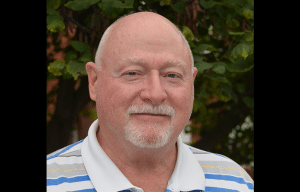The Many Benefits of Spending Time in Greenspaces | For Your Health
BY DR. GRAHAM COLDITZ
Siteman Cancer Center
As wonderful as summertime can be, there’s also something really nice about the calendar – and the weather – turning toward fall. The light starts to soften a bit, and the crisp mornings and warm afternoons invite us to spend more time outside.
Maybe that’s walking the kids home from school, cycling to the grocery store to grab a few items, or just enjoying a talk with a friend on a coffee shop patio.
Spending time at a park is another great fall activity, and one that can have a surprising number of benefits. Whether it’s a ballfield down the street or a state or national park further away, research shows that spending time in open areas with grass, trees, and other plants can be good for both our mental and physical health.
“Some of the benefits that can come from exposure to greenspaces include improvements in sleep, blood pressure, cognitive function and physical activity, as well as reduced risks of chronic diseases, such as type 2 diabetes, cardiovascular disease and cancer,” said Heather Eliassen, ScD, a professor of nutrition and epidemiology at the Harvard T.H. Chan School of Public Health. She says other benefits include better mental health in both children and adults, improved infant birth weights and possibly even a lower risk of dying prematurely.
How do greenspaces provide such benefits? One key reason is that they encourage people to be physically active – to walk, skate, kick a ball around or play frisbee. We know that being more active has wide-ranging health benefits.
However, that’s likely not the only reason parks and other greenspaces are good for us. They can also help decrease stress and anxiety, improve mindfulness, and provide an environment that may be cooler, quieter and have cleaner air than where we typically live. Greenspaces also offer opportunities for social interactions and community engagement. Each of these can have its own health benefits, Eliassen added.
When planning a trip to a park, it’s good to keep a few things in mind that can keep your visit as safe and enjoyable as possible:
- Bring enough water, and if it’s going to be a longer visit, don’t forget snacks.
- Wear sunscreen and sun-protective clothes, and seek out shade when you can.
- If you’ll be walking, hiking or playing a sport, wear a good pair of shoes and keep your effort in line with your fitness.
- It’s always safest to go with a friend or family member, rather than by yourself.
A quick search on the phone can often be the easiest way to find which city, state and even national parks are closest to us. While bigger trips to state and national parks can be wonderful, it’s the parks closest to us that we’ll visit the most and likely get the most benefit from.
“Learn about opportunities in your neighborhood and which greenspaces are easily accessible to you,” Eliassen said. “If there are some that are a short or medium distance from home, try walking or biking to the greenspace to get the benefits of exercise while getting to the greenspace. Or, find greenspace you could incorporate into your commute to and from school or work.”
Spending time in greenspaces can have so many benefits that they’re sometimes referred to as a “public health resource.” That should give each of us a little extra incentive to regularly visit our neighborhood parks, or plan a special trip to a state or national park. That may even inspire some of us to become advocates for greenspaces, working to make them a part of our cities’ plans so that even more people in our communities can have access to the broad benefits they have to offer.
For many reasons, try to get out and enjoy a walk in this park this fall.
It’s your health. Take control.
Dr. Graham A. Colditz, associate director of prevention and control at Siteman Cancer Center at Barnes-Jewish Hospital and Washington University School of Medicine in St. Louis, is an internationally recognized leader in cancer prevention and the creator of the free prevention tool YourDiseaseRisk.com.





